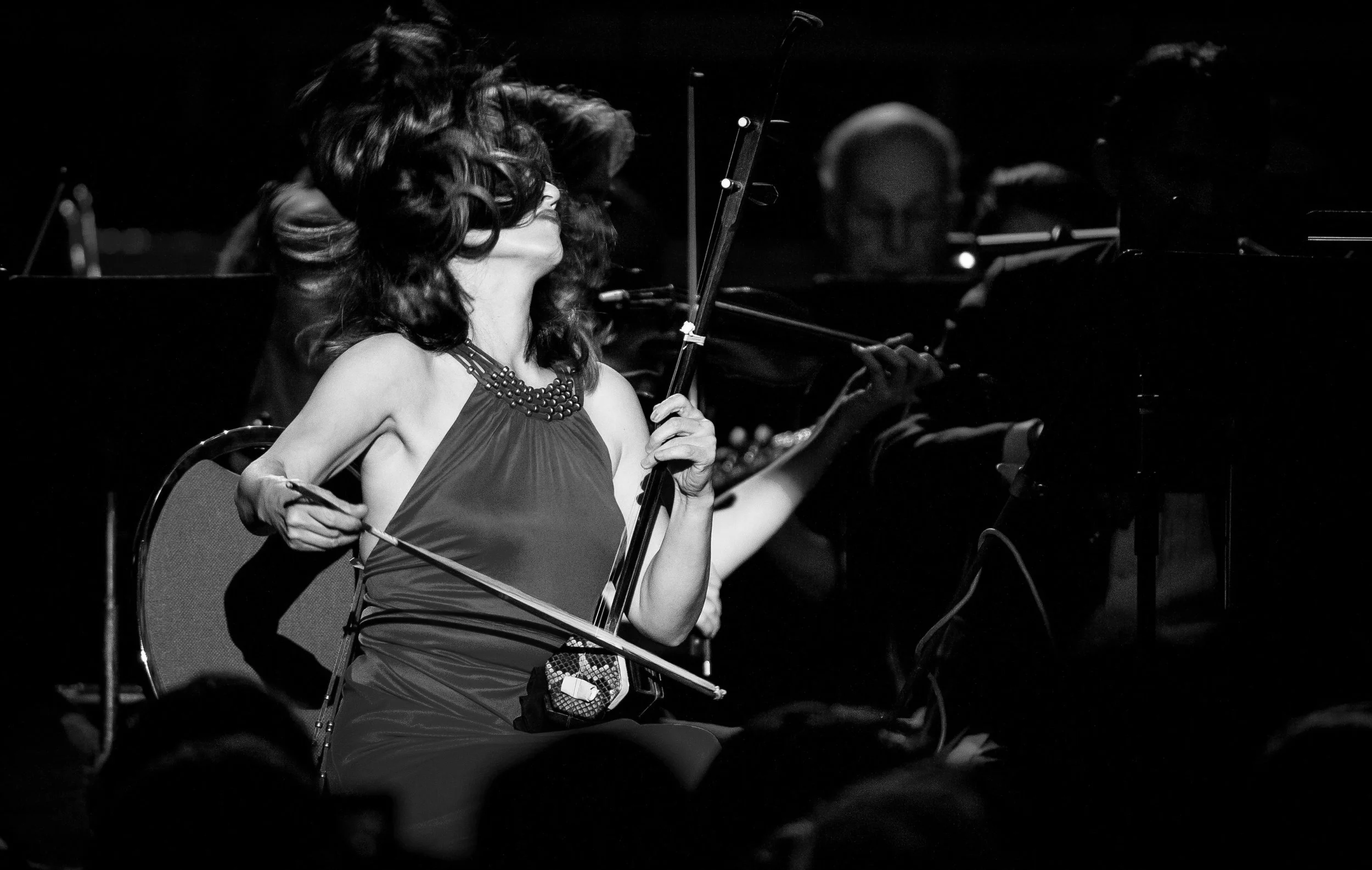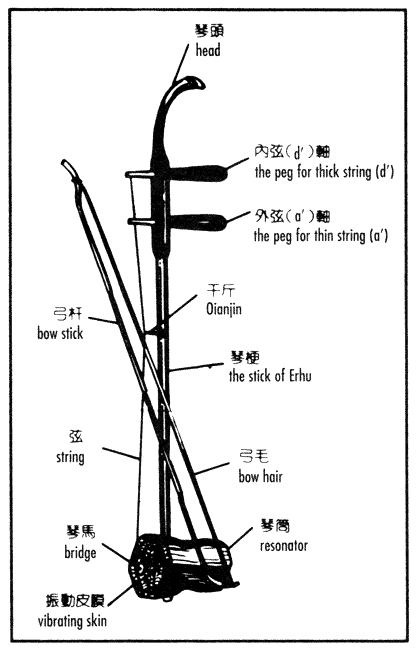Anatomy of the Erhu
The Erhu is an ancient Asian instrument, brought to China during the Han dynasty (~140 B.C.). It is a member of the huqin family. Bowed instruments became popular in China during the Sung dynasty (A.D. 960-1279). The Erhu is one of the most widely used bowed instruments in China. This two-stringed instrument is played with the bow between the strings in a push-pull manner. The sound box is covered by a serpent skin which gives the instrument its distinctive tone of color.
Throughout its history, the Erhu has been constantly improved, so that its tone is now mellow and bright, similar to the violin, yet more soulful and expressive. Its lower tones sound forceful and lavish. The mid-tones are gentle and touching, while high tones turn clear and bright. This changeful character makes it possible for the Erhu to perform music with a variety of moods.
Played with a variety of techniques, it is now extremely popular for both solo and orchestral performances. In classical Chinese music the Erhu is melodic, haunting, ever changing, and alive. The traditional style of playing is rich in ornamentation, giving the music a deep, three-dimensional quality.
ERHU MUSICAL NOTATION
Shown here is an example of erhu music in both western and Chinese notation. This is the beginning of the famous piece "A Moon Reflects on the Er-Chuan Spring".
Chinese notation gives relative pitch compared to the tonic or key: numbers indicate the note pitch value. The number 1, for example, means the note 'G' if the piece is in the key of G. The number 6, which opens the piece below, means the note "E" which is a 6th above G, and so on. The timing of each note is indicated by the horizontal lines beneath the numbers. No line means a quarter note (with extensions to longer values indicated by a single quote mark), one line means an eighth note and so on. Rests are indicated by the number 0. A dot between note numbers indicates the equivalent of a dotted note in western music. The symbols above the numbers indicate fingering (via numbers in Chinese writing), bowing, various techniques and ornamentations and which string to play.


